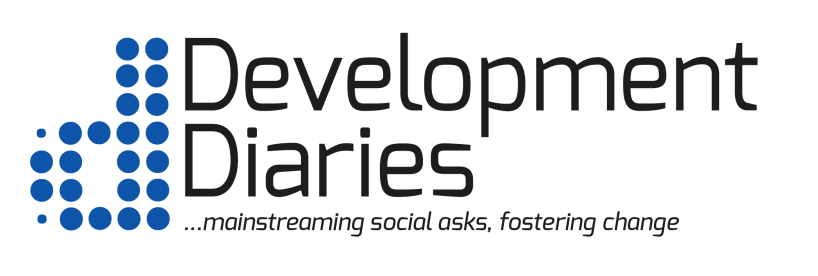The United Nations (UN) has said it needs $41 billion to provide humanitarian assistance to 183 million people most in need in Africa and other parts of the world in 2022.
The figures, which are contained in the UN Global Humanitarian Overview 2022, show that North, West and Central Africa continue to have the most humanitarian needs due to protracted crises.
It is understood that despite increasing needs, some countries, such as Chad and Democratic Republic of the Congo (DRC), have reduced the number of people targeted in their response plans.
Zimbabwe’s humanitarian response plan (HRP) was rated as the most underfunded in 2021, with just 19 percent of the $507.0 million funding appeal covered so far.
An estimated 800,000 people in Libya need some form of humanitarian assistance in 2022, a 36 percent decrease compared to 2021. The UN noted that it needs $75.3 million to reach its target of 200,000 people in the North African nation this year.
Libya has been plunged into violence since the NATO-supported uprising that toppled Muammar Gaddafi’s regime in 2011.
‘If the political reconciliation continues, some of the most pressing humanitarian concerns should decrease, especially for non-displaced and returnee populations. If conflict returns, an estimated 1.6 million people could be affected’, the UN said.
According to the UN, internally displaced persons (IDPs), returnees, migrants, refugees and non-displaced people will remain the priority vulnerable groups from January to May 2022.
In Burundi, about 1.8 million people will need humanitarian assistance in 2022, out of which the UN will target 947 thousand people with $183 million required for the response.
The combined effects of flooding caused by the rising waters of Lake Tanganyika and Rusizi River, frequent epidemic outbreaks, the socioeconomic impacts of Covid-19, as well as increasing refugee returns are responsible for the humanitarian crisis in Burundi.
‘The response will prioritise the most vulnerable populations, particularly returnees, victims of natural disasters, including IDPs, and those affected by/at risk of epidemics, food insecurity and malnutrition’, it stated.
‘Of the 1.4 million people who are food insecure, 508,000 will be targeted for food assistance in 2022′.
In Ethiopia, UN agencies will target 22.3 million out of the 25.9 million people in need, with $2.75 billion needed for the response in 2022.
Armed conflict, climate shocks (including drought and flooding), disease outbreaks, a desert locust invasion and the continuing socioeconomic impacts of Covid-19 have left a significant portion of Ethiopia’s population in need of humanitarian support.
Armed conflict started after the Tigray People’s Liberation Front (TPLF), the regional government in Tigray, attacked a key Ethiopian military base in the region in November 2020.
‘The response priorities for 2022 will primarily focus on multisectoral life-saving and life-sustaining assistance, protection services and resilience-building to support at-risk and vulnerable people, particularly women, children, elderly persons and people with disabilities’, the UN noted’.
Back-to-back droughts buffeted the Grand Sud of Madagascar during the 2019–2020 and 2020–2021 rainy seasons, leaving at least 1.6 million people in need of humanitarian assistance.
UN agencies are aiming to reach 1.3 million people with humanitarian assistance in 2022. This will require $ 64.5 million.
The UN noted that more than 50 percent of those in need are women and girls with an estimated 49,500 pregnant women exposed to excess maternal morbidity and mortality due to lack of access to essential obstetric care in the Grand Sud.
In Mozambique, the number of people in need of humanitarian assistance in 2022 is 1.5 million. The UN says it needs $388.5 million to support about 1.2 million people.
The southern African nation has faced cyclones, conflict and Covid-19 in the last two years, affecting hundreds of thousands of children and caregivers. Its northernmost province of Cabo Delgado has been plagued by the rise of violent extremism since 2017.
An estimated 745,000 people were internally displaced in northern Mozambique by September 2021, according to the International Organisation for Migration (IOM).
The IOM noted that children and women accounted for 52 percent and 27 percent of displaced persons in Mozambique.
In Somalia, $ 1.5 billion is needed to address the humanitarian needs of 5.5 million people. The resulting conflict from a continued military offensive against Al-Shabaab and climate change is increasing humanitarian needs in the country.
‘In 2022, some 1.2 million children under five years of age are likely to be acutely malnourished, nearly 300,000 of whom are projected to be severely malnourished and may be at risk of dying without immediate treatment’, it said.
Climate change and insecurity in Somalia are driving severe humanitarian needs with over 80 percent of the country suffering from drought conditions.
Data from the UN shows that Somalia is on the frontline of climate change and has experienced more than 30 climate-related hazards since 1990, including 12 droughts and 19 floods.
In South Sudan, the UN says it needs $ 1.67 billion to address the humanitarian needs of 6.7 million people; while in neighbouring Sudan, the situation is not much better with the UN appealing for $ 1.9 billion to address the humanitarian needs of 10.9 million people out of the 14.3 million in need.
It is understood that UN agencies also require $ 561 million in 2022 to meet the humanitarian needs of three million people in Burkina Faso.
In Cameroon, $371.5 million is needed to help support 2.8 million people who are impacted by the conflict in Cameroon’s Far North, the Lake Chad basin conflict and the refugee crisis from the Central African Republic (CAR).
In the CAR, the UN requires $461.3 million to support two million people in need. UN agencies noted that the combined impact of Covid-19 and the deteriorating security situation have left one in four Central African displaced.
In the Democratic Republic of the Congo (DRC), the number of people who need humanitarian assistance in 2022 (27 million) has increased compared to 2021 (19.6 million).
Violent attacks attributed to the Allied Democratic Forces (ADF) armed group have increased in brutality since late 2020, and the frequency of killings of civilians has not abated.
Climate change and natural disasters such as the eruption of Mount Nyiragongo in May 2021, which led to the temporary displacement of over 400,000 people, also compounded humanitarian needs.
The UN is targeting 8.8 million people in DRC with support in 2022. This action will require $1.88 billion.
In Mali, 6.3 million people need humanitarian support, according to the UN, as it aims to ‘preserve the lives of 80 percent of host populations, IDPs, returnees, migrants and other vulnerable groups in crisis-affected areas’.
Recurrent natural disasters, severe poverty and civil conflict since 2012 have exacerbated food insecurity and hunger in Mali.
The UN is targeting 4.8 million people in Mali with humanitarian support, which requires an overall budget of $576 million.
‘Niger faces a broad range of complex humanitarian needs linked to escalating conflict-related violence, climate-related disasters and socioeconomic challenges. The number of people in need has increased by 65 percent, from 2.3 million in 2019 to 3.8 million in 2021’, the UN said.
UN agencies need $475 million to address the humanitarian needs of 2.1 million people in the West African country.
In neighbouring Nigeria, 8.3 million people need humanitarian assistance but the UN is only targeting 5.4 million people, requiring an overall budget of $1.1 billion.
‘[12] years into the humanitarian crisis in northeast Nigeria’s Adamawa, Borno and Yobe states, the needs are as severe and largescale as ever’, it noted.
‘The crisis continues unabated, and affected people’s living conditions are not improving; they still live with great unpredictability, privation far beyond chronic poverty, and daily threats to their health and safety’.
Additionally, the UN stated that its 2022 Refugee Response Plan (RRP) will be implemented in close collaboration with a wide range of partners, including other international and national organisations, civil-society actors as well as local organisations.
Source: UNOCHA
Photo source: UNAMID/Hamid Abdulsalam





